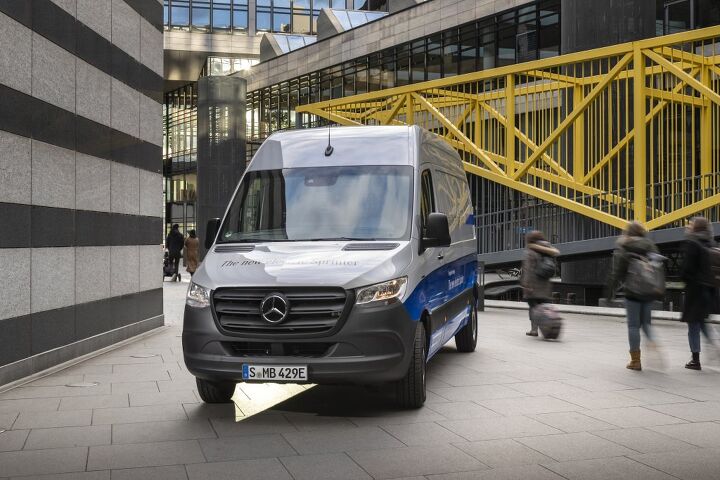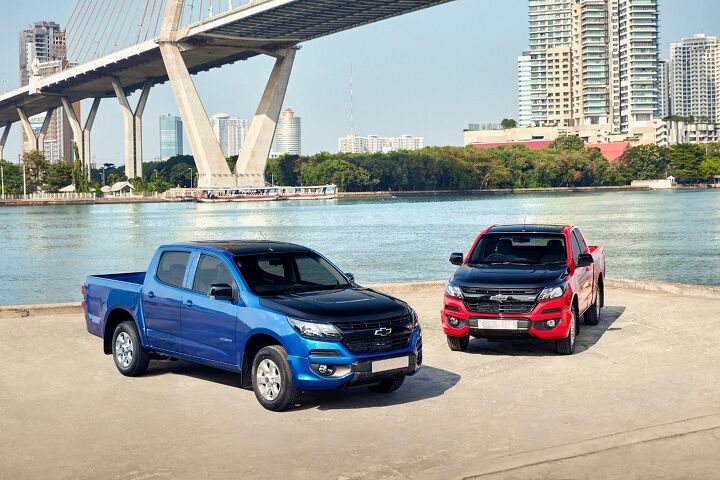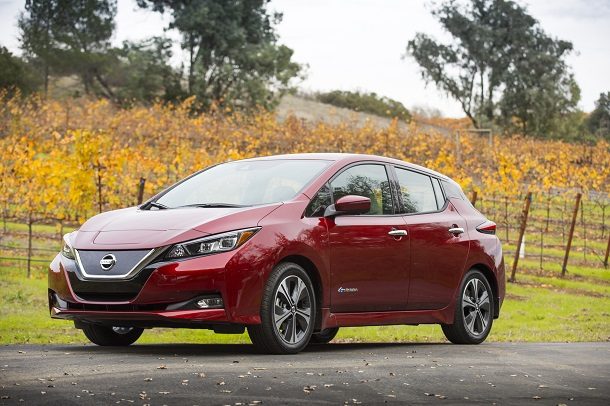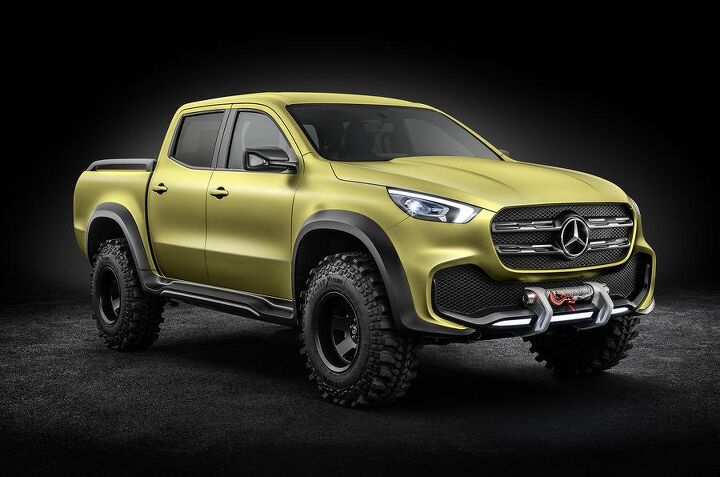#markets
Nissan Pulls Out of Russia
Nissan is ending operations in Russia. The company has announced that it has sold its assets to the Russian government for a single Euro, which actually sounds like one hell of a deal considering Nissan estimates the decision will cost the business roughly 100 billion yen – or $687 million USD.
Jaguar Is Going to Try and Sell the I-Pace in India
Jaguar Land Rover unveiled its all-electric SUV to the Indian market this week, proving that it’s dead serious about expanding the I-Pace’s customer base. While parent company Tata Motors undoubtedly has a fondness for its home region, we cannot help but wonder if its a market worthy of pursuit considering the model’s starting price.
The manufacturer has the (90-kWh) I-Pace stickered at 105.91 lakh rupees, which translates to about $147,000 USD. Considering the unique way India writes out denominations and often transitions between crore and lakh as a way to avoid listing high-value items in the millions of rupees, we were initially convinced we’d messed up the conversion. The sum would not only eclipse the $70,000 MSRP Jaguar has affixed to the I-Pace in the United States, it makes it highly uncompetitive against the luxury EVs already on a market that’s not known for its wealthy consumer base. How could this be JLR and Tata’s preferred strategy?
Mercedes Reportedly Shipping the ESprinter Stateside in 2023
Mercedes-Benz is reportedly planning to bring an electric commercial van, presumably the eSprinter, to the United States as early as the third quarter of 2023. While the all-electric van launched earlier this year in Europe, the manufacturer said it wanted to hold off on North American exports for reasons that should be obvious to anybody familiar with the industry. The model’s rather low range (up to 96 miles, depending on load and route) makes it a poor fit for North America’s wide-open spaces, as does its standard 75 mph (or optional 50 mph) top speed. Meanwhile, the necessary homologation efforts required to sell the eSprinter in the U.S. would only increase the price of a vehicle already ill-suited to the nation’s roadways.
Were it to come here now, we’d be looking at a cargo van with an MSRP dangerously close to $60,000 and the top speed and range of a small-displacement dirtbike. Regulatory incentives aside, it doesn’t seem like a worthwhile addition to the North American landscape. But analysts are worried that Mercedes-Benz needs to get a move on and ensure the vehicle comes to the U.S. market before it’s edged out by the competition. It’s a position we’d be inclined to agree with had the eSprinter arrived with more robust specifications.
Hyundai's 2021 Veloster Comes in Three Flavors, but North of the Border, It's a Very Different Story
The Hyundai Veloster remains an automotive oddity in a vehicle landscape rapidly shunning nonconformity, and for that, we give Hyundai credit. The car still exists. You author can still recall the first time he ever encountered one in the wild — in historic Vieux-Québec, with the “three-door” hatchback resting quietly under a streetlamp on those cobblestone streets.
A second-generation model landed in the latter part of 2018, with newfound power coming by way of the first N-badged Hyundai. With 250 horses and 260 lb-ft of torque, the Veloster N was a vehicle worthy of the hot hatch banner. And come 2021, it’ll be the only Veloster offered north of the border.
Getting Back to Normal? Far From It - U.S. Rife With Gloomy Consumers, Young Car Buyers Lowering Their Expectations
Consumer spending and confidence are not hitting record highs. Go figure. As the pandemic rages and a vast swath of formerly gainfully employed Americans find their financial future much hazier then before, new car sales are suffering. It doesn’t bode well for sales volume during the remainder of the year.
Of course, that pain is not spread evenly among all automakers, but let’s set the OEMs’ concerns aside for a moment. What are actual buyers and doing — and thinking?
Mitsubishi in America: Slow Fade-out Ahead?
Mitsubishi watched as its U.S. and Canadian volumes rose steadily over the past several years — growth hampered by a limited product lineup and so-so vehicle quality. Still, it was growth, and Mitsu made sure to celebrate each year-over-year sales increase.
Well, that was then, and this is now. As a member of an alliance dominated by Renault and Nissan and hit hard, like many others, by the coronavirus pandemic, the future holds a different strategy for the Japanese automaker. For the U.S., it also seems to hold fewer Mitsubishis.
Nissan and Renault Divvy Up Production Responsibilities
Nissan and Renault opted against a full merger on Wednesday, but neither side seemed to feel now was the time to disband the alliance and see how they might fare as a solo act. Every member of the Renault–Nissan–Mitsubishi Alliance took time to address financial concerns last year, encouraging further product integration as a cost-mitigation strategy. Despite Nissan shareholders and staff clearly losing interest in the French-led confederation, the brand seems to understand that leaning upon its allies might be the only way to get through a period of increasing economic uncertainty.
Mitsubishi slashed its 2020 financial forecasts ahead of the coronavirus pandemic by over $500 million while the other two issued numerous profit warnings in the latter half of 2019. Now the world is exiting lockdowns and assessing the economic damage they caused. Obviously, this is not the time to be burning bridges, even if some alliance partners aren’t enthralled with what’s probably waiting on the other side.
Report: Nissan to Put Alliance Partners to Work, Divvy Up Markets
Nissan’s new restructuring plan, due out at the end of the month, is coming together, and it seems the document will spell out which members of the Renault-Nissan-Mitsubishi alliance will go where. In the interests of efficiency and not stepping on each other’s toes, sources claim the plan will see each automaker pour themselves into key markets, rather than competing against each other.
This will have the effect of making maximum use of resources.
For the Nissan brand, that means North America, China, and Japan will become its main stomping grounds.
Locked-down State Opens up Online Auto Sales, Nudging Industry in Direction of Recovery
Don’t expect the Present Year to come close to the sales tallies racked up in 2018 or the year before. No analyst foresees such a scenario; globally, LMC sees auto production taking a 20-percent haircut in 2020.
But the return to normality is underway in the U.S., aided by the federal government’s reopening plan (a set of guidelines to be acted on by individual states), but especially by the realization of governors that car buyers need some way to bring a vehicle home. Michigan, via an executive order, greenlit online sales on April 9th. Now it’s Pennsylvania’s turn.
Exodus: GM Isn't Just Departing the Australian Market
The news that General Motors will exile Holden to the Island of Lost Brands overshadows changes set to occur elsewhere in the world, all part of the automaker’s plan to cut costs via a streamlined global footprint.
China, despite its current problems, is still seen as a market with great growth potential, but the same can’t be said for another Asian nation.
You'll Never Guess Which Car Shoppers Distrust Chinese Vehicles the Most
Nah, that’s completely false. You know exactly which car buyers would turn up their noses at the prospect of bringing home a brand new Geely or GAC. (Aren’t these brand names inspiring?)
After becoming familiar names in Europe, new tariffs have made the imminent influx of Chinese-branded vehicles into the U.S. less than certain. Suddenly, the 2018 Detroit auto show, with its big display of shiny new GACs (including a luxurious minivan with La-Z-Boy-like rear seats), seems so long ago.
But pretend for a second that the new tariffs don’t exist, and that Chinese automakers are poised to open up American showrooms tomorrow. Who’s likely to consider one? Who isn’t? A recent study will almost certainly not surprise you.
It Might Take More Than American Enthusiasm to Make This Volkswagen Truck a Reality
Volkswagen’s Atlas Tanoak concept was one of the few interesting products to emerge from last week’s New York auto show, but the Atlas-based pickup remains a one-off for now. The automaker plans to judge consumer interest before making a decision to scrap the idea or sign off on a production version. Naturally, with VW staking it’s U.S. fortunes on light trucks, the volume-seeking company would like to get as much mileage out of its Atlas architecture as possible. See the two-row Atlas Cross Sport for Exhibit B.
But does the Tanoak’s future hinge on Americans expressing an overwhelming desire for a VW truck? Not entirely.
Seeking Global Domination, Nissan Hunts New Markets for the Leaf
After becoming something close to a joke over the past couple of years, the once-groundbreaking Nissan Leaf enters 2018 with a new skin, larger battery, and enhanced range. Next year brings an optional battery upgrade, finally giving the five-door EV a range capable of challenging Tesla and General Motors.
Now that it has a competitive vehicle positioned as a value pick in a growing segment, Nissan wants everyone to get a chance to buy one, no matter where they live. It may have shied away from sales targets in the U.S., but Nissan’s not dialing back its global ambitions.
Good News, America - You've Been Chosen to 'Physically Interact' With the Polestar Brand
Lordy, PR-speak can be offputting. Nevertheless, the newly single Polestar — cast off from Volvo Cars to become its own electrified performance brand under the Geely corporate umbrella — is heading straight to the United States.
The U.S., not surprisingly, was chosen as an initial launch market for the brand, along with China (every electric car maker’s dream market), Germany, Norway, Sweden, and the Netherlands. What form will the rollout take? Let’s just say there’s going to be a lot of interaction. Physical interaction.
The United States Won't Pickup Mercedes' X-Class in 2017
Mercedes-Benz has decided against bringing its X-Class pickup to the U.S. market next year. However, this doesn’t mean we won’t eventually see the luxury truck hauling grand pianos and crystal chandeliers down American highways.






























Recent Comments